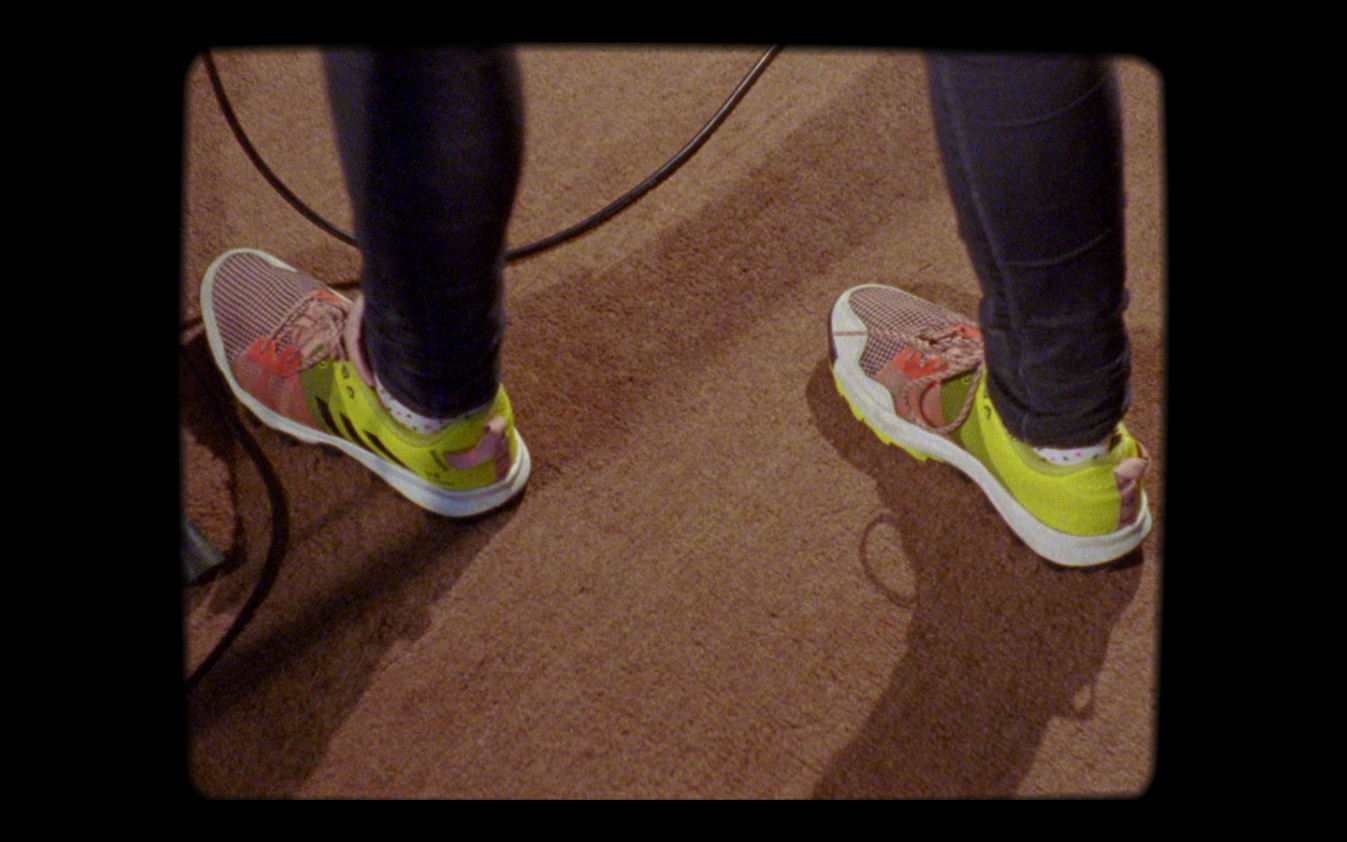Your way or nothing at all
This is a reminisce
This is a reminisce
This is a reminisce
Fowler’s film focuses on Tompkins’ performance ‘Country Grammar’ created in 2003, one of her earliest pieces performed within a gallery context.
Tompkins’ performance works begin from her texts – a stream of notes – fragments of signs, observations, seen and heard. These discreet texts are then collated, assembled and edited into longer performances, which are often re-edited and adapted within each performed iteration. There are overlaps between Fowler and Tompkins’ practice, where Fowler collects images and sounds from his daily life with a handheld 16mm camera, and weaves them together to create a complex network of film units.The film begins with the recording of Tompkins performing at Chem19 Recording Studio. Fowler’s main intent was to record Tompkins from a variety of aural and visual perspectives – using a range of different microphones – from a Neumann U87 condenser mic to a powder coated pink STC handheld dynamic mic. These two microphones are the primary instruments used in the recording and were panned hard left and right – so that when Tompkins goes off axis on the stationary U87 it is picked up by the handheld STC and vice versa- creating a wide sound-stage that articulates the dynamism of Tompkins’ performance. This close-mic’d recording is supplemented by the addition of omni-directional room mics’ and latterly field recordings – which add a further depth to the recording.The camera weaves in and around Tompkins’ performance – filming from a multitude of perspectives, employing rhythmic pans, tilts and opaque or reflective screens. These distorted views, combined with non-synchronised images of the performer depart from a 70s ‘direct cinema’ approach to filming musicians. Instead, this methodology reflects a recursive and disjunctive approach to filmmaking which embraces the unique flaws and idiosyncrasies of the medium. After the opening section, which deals with performance as a kind of ritual, the film widens its view to locations outside of the studio. The repetition of filmed actions (picking books from a shelf, re-arranging the contents of a fridge) suggest a searching for a threshold between the filmed image and Tompkins’ own spoken word acts. In these sequences the role of performer and director are questioned. Taking cues from the performers’ hypnotic – yet concrete play with language – the film reacts by creating a metaphoric, symbiotic language – where an open-ended approach to montage transcends both reductive imagery and straight documentation.



